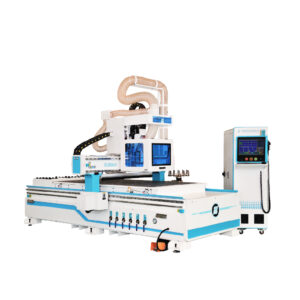For furniture makers, cabinet shops, and other woodworkers, achieving perfectly finished edges on panels and boards is critical for a professional, upscale appearance. While manual edge banding using irons and trimmer tools has been a traditional process, modern edge banding machines now offer faster, more consistent, and more durable results. In this blog, we’ll look at what edge banding machines are, their benefits versus manual methods, key technical considerations for selection, and best practices for setup and operation. Whether you’re a small custom shop or a large production facility, adopting edge banding machinery can give your products that crisp, flawless look your customers will appreciate.

What Are Edge Banding Machines?
Edge banding machines automatically apply and trim decorative edging materials to sheeting stock such as plywood, particleboard, and MDF. This covers the exposed core and provides an attractive, finished look along the panel edges. Common edging materials include PVC, ABS, acrylic, melamine-coated papers, wood veneers, and flexible foil tapes.
The automated edge bander feeds the edging strip and panel into the machine where the edging is first activated using heat, adhesive, ultrasonic energy, or a combination. Next, rollers apply uniform pressure to form a tight permanent bond. Trimmer saws then cut the excess edging flush with the top and bottom panel faces resulting in an evenly banded professional edge.
Benefits Compared To Manual Methods
Edge banding machines by edge banding machine supplier, provide significant advantages over manual edging techniques:
- Speed and efficiency – Edge banding rates of up to 16 meters per minute or more enable high production throughput.
- Labor savings – Automated process reduces direct labor compared to manual edge preparations.
- Consistency – Programmable settings and automated pressure application give reliably uniform glue bond quality.
- Precision – Automated trimming delivers perfectly straight edges with minimal chamfer.
- Durability – Evenly applied heat and pressure creates strongest long-lasting edge bond.
- Versatility – Quick material changeovers accommodate small mixed production runs.
For most mid to high-volume production shops, the finished edge quality, throughput, and labor gains possible with edge banding machinery make them a worthwhile investment.
Key Considerations for Selection
When choosing automated edge banding equipment, key factors to consider include:
- Workpiece size and thickness capacity
- Edging material compatibility (PVC, veneers, etc.)
- Right vs. left side edging capabilities
- Heating options (electric, hot air, laser, infrared)
- Feed speed adjustability
- Available edge profiling options
- Automated trimming precision and panel flushness
- Dust collection integration
- Budget and options balancing initial cost versus capabilities
Following Best Practices
Properly setting up and operating edge banding machines is important for optimal results. Best practices include:
- Select appropriate edging width and thickness that matches the panel material and application needs.
- Ensure panel materials have proper moisture content before banding.
- Adjust heating, speed and pressure for specific edging material used.
- Perform test runs on scrap materials to fine-tune machine settings.
- Clean and replace trimmer blades regularly for smooth cuts.
- Inspect first and last workpieces on each batch for bond quality.
With their ability to transform panels and boards into furniture-grade finished pieces, edge banding machines are smart investments that can significantly boost production capacity and quality for fabrication shops. Adopting the right automation solution can streamline workflows, reduce labor, and ultimately expand profit margins on projects.

